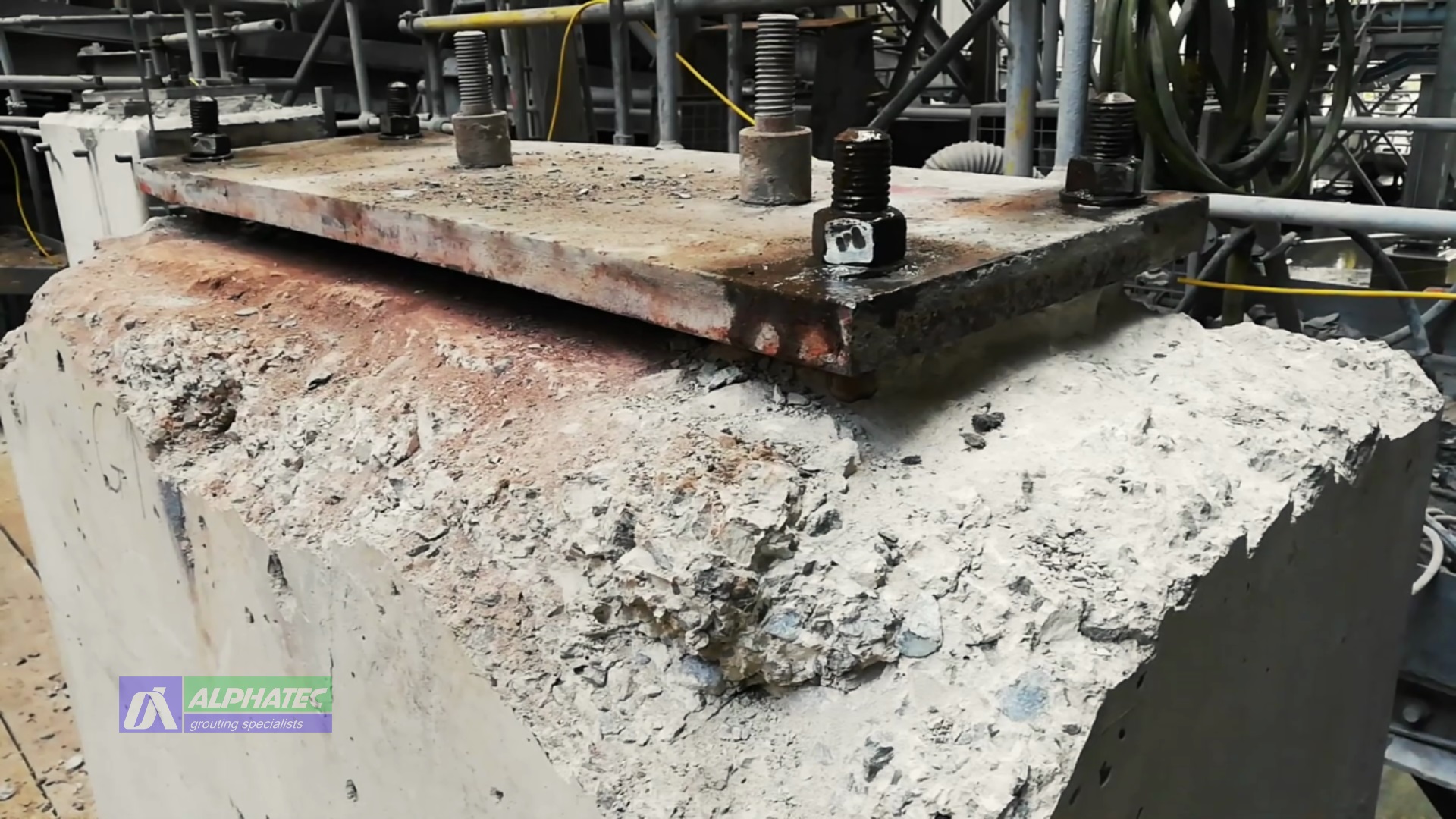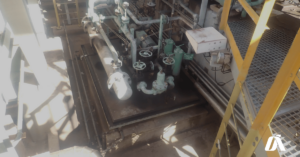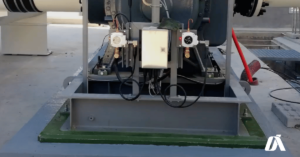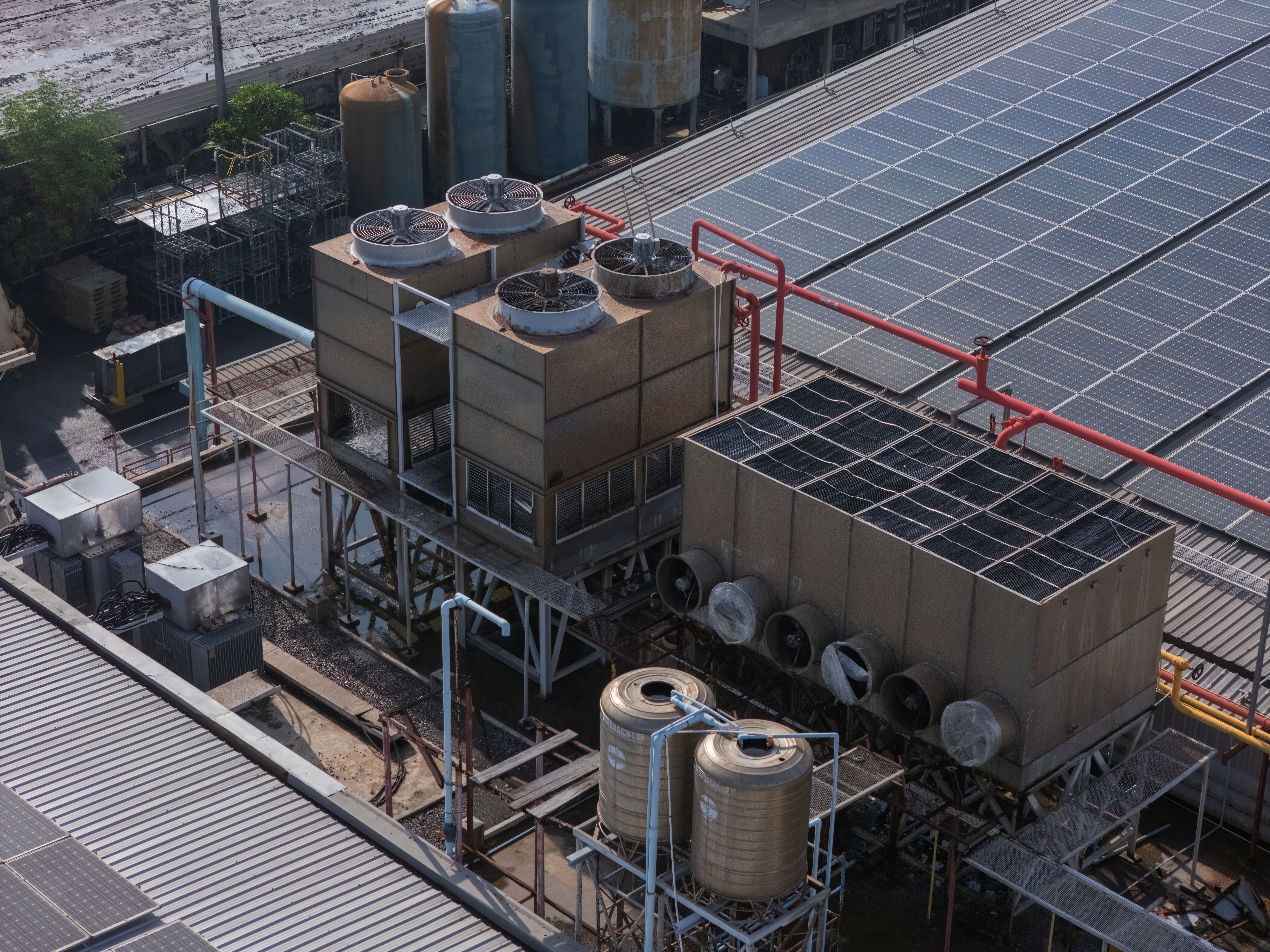Skid-mounted equipment is widely used across industrial processing plants, refineries, and power stations for its mobility, modularity, and reduced site installation time. But the performance of these skids and the machines they carry, depends heavily on how well they are installed.
Whether it’s a compressor package, a diesel engine generator, or a pump skid, a poor skid installation can lead to excessive vibration, structural fatigue, and even equipment failure. Proper skid installation is not just about putting machinery in place. It’s about securing long-term reliability, safety, and performance.
What Is a Skid Foundation?
In industrial applications, a machinery skid is a steel base or structural frame that supports rotating or reciprocating equipment and connects it to the foundation. It ensures that the weight of the machinery is evenly distributed and provides mounting points for alignment, anchoring, and vibration damping.
Skids serve as the interface between precision-engineered machinery and the often-variable conditions of an industrial foundation. They must therefore be precisely aligned, securely anchored, and correctly grouted to ensure load transfer and operational stability. Steel skid foundations can be used as an alternative to concrete block foundations.
Why Skid Installation Needs to Be Engineered
Improper installation of skids can lead to:
- Misalignment of rotating components, resulting in increased wear and seal failure
- Excessive vibration, which compromises both mechanical performance and operator safety
- Uneven weight distribution, leading to cracking of grout or concrete foundations
- Loosening of anchor bolts, especially under cyclic or dynamic loading
- Unscheduled shutdowns, costly maintenance, or even permanent equipment damage
These risks are heightened in sectors like oil and gas, chemical processing, and power generation, where heavy machinery operates continuously under variable loads.
Key Factors to Consider Before Skid Installation
To achieve a vibration-free, secure skid installation, the following technical aspects must be considered:
1. Load Requirements and Weight Distribution
- Evaluate static and dynamic loads of the machinery, including transient forces during startup/shutdown
- Ensure the skid’s design and baseplate thickness are sufficient for the equipment type (e.g. compressors vs. pumps)
- Avoid over concentration of loads at corners or anchor points by using high-strength epoxy grout for uniform load transfer
2. Environmental and Site Conditions
- High humidity, salt-laden air, and chemical vapours can degrade concrete and steel surfaces
- Foundation coatings (e.g. epoxy paint) must be compatible with grout and anchoring methods
- Thermal expansion, seismic activity, and soil movement must be considered during skid alignment
3. Compatibility With Machinery and Foundation
- Match the skid layout and anchor bolt patterns to the machinery footprint and embedded plate design
- Confirm that alignment tolerances fall within the manufacturer’s recommendations (e.g. 0.1 mm/m)
- Address any existing foundation irregularities before positioning the skid
Best Practices for Skid Installation
Successful skid installation requires a blend of mechanical precision, high-performance materials, and skilled execution. Here’s how Alphatec Engineering approaches it:
1. Precision Alignment and Levelling
- Laser alignment tools ensure skid flatness and co-planarity with the foundation
- Shimming is avoided in favour of epoxy grout to provide 100% surface contact
- Grout pocket depths are designed to accommodate equipment-specific requirements
2. Secure Anchoring and Load Transfer
- Epoxy grouting is applied beneath the skid to lock it into place and absorb dynamic loads. (The epoxy grout is the bond between the equipment and the foundation and probably the most important aspect of a unitized installation.)
- High-strength epoxy systems like ALPHATEC® 800 provide compressive strengths >90 MPa
- Anchor bolts are pre-positioned and torque-checked according to ISO or API RP 686 guidelines
3. Post-Installation Checks and Documentation
-
- Visual and ultrasonic inspection of grout and anchor systems
- Verification of alignment and vibration baselines before handover
- Full documentation for QA/QC compliance and future maintenance reference
The Alphatec Difference
Alphatec Engineering specialises in machinery skid installations, combining mechanical expertise, proprietary epoxy grout systems, and global experience across sectors such as LNG, mining, and power generation. Our engineered approach ensures:
- Zero shims for maximum surface contact
- Vibration-free performance through dynamic load transfer
- Long-term reliability of both machinery and foundations
- Reduced maintenance costs and downtime
From epoxy grouting of skids to anchor bolt torqueing and foundation rehabilitation, we deliver turnkey solutions engineered for performance and durability.
Final Thoughts
Proper skid installation is not an optional step, it’s a foundational element of reliable plant operation. Cutting corners at this stage leads to vibration issues, structural cracks, and mounting safety risks.
If you’re planning a new installation or troubleshooting an existing skid-mounted system, contact Alphatec Engineering to explore how our specialised services can support your machinery’s full potential.





